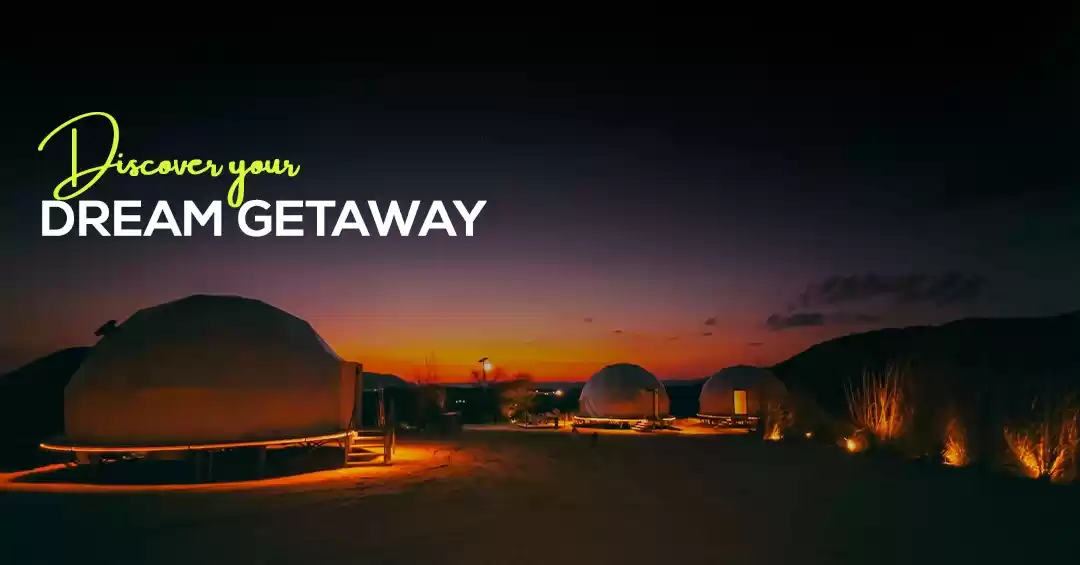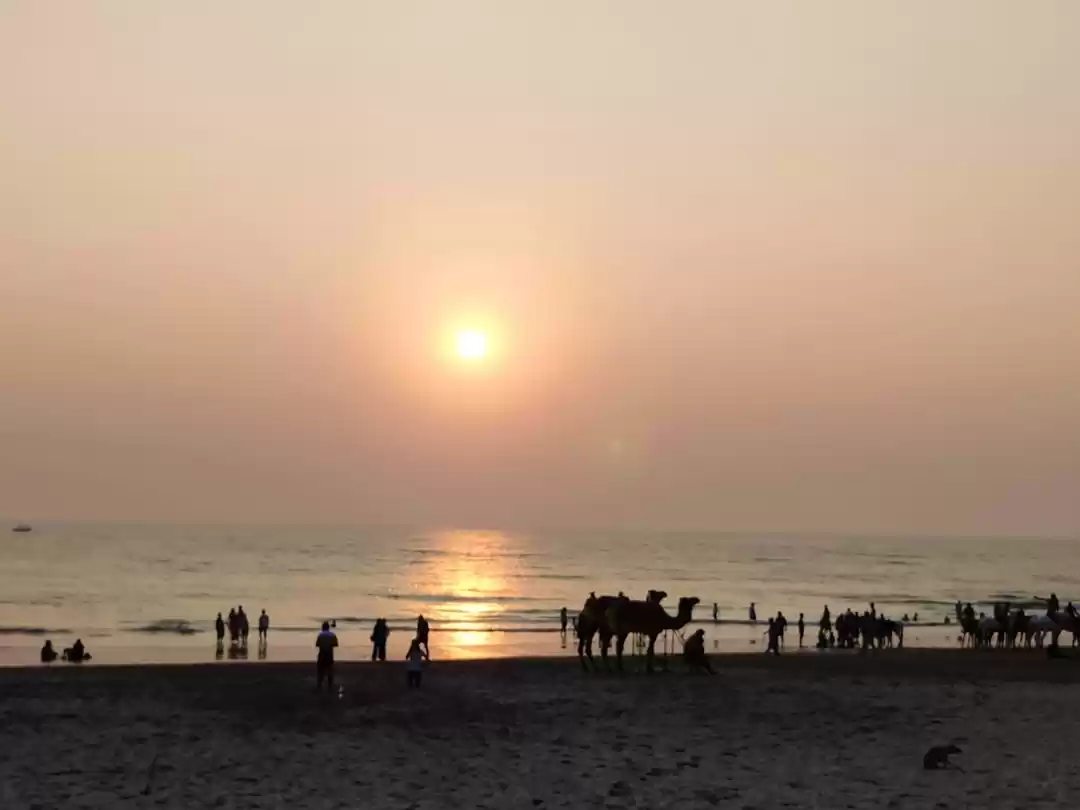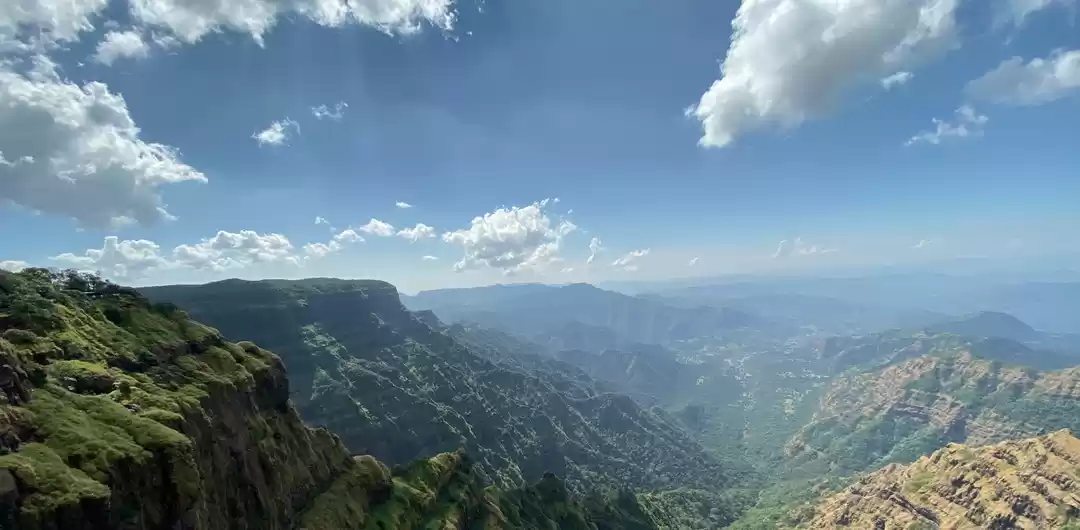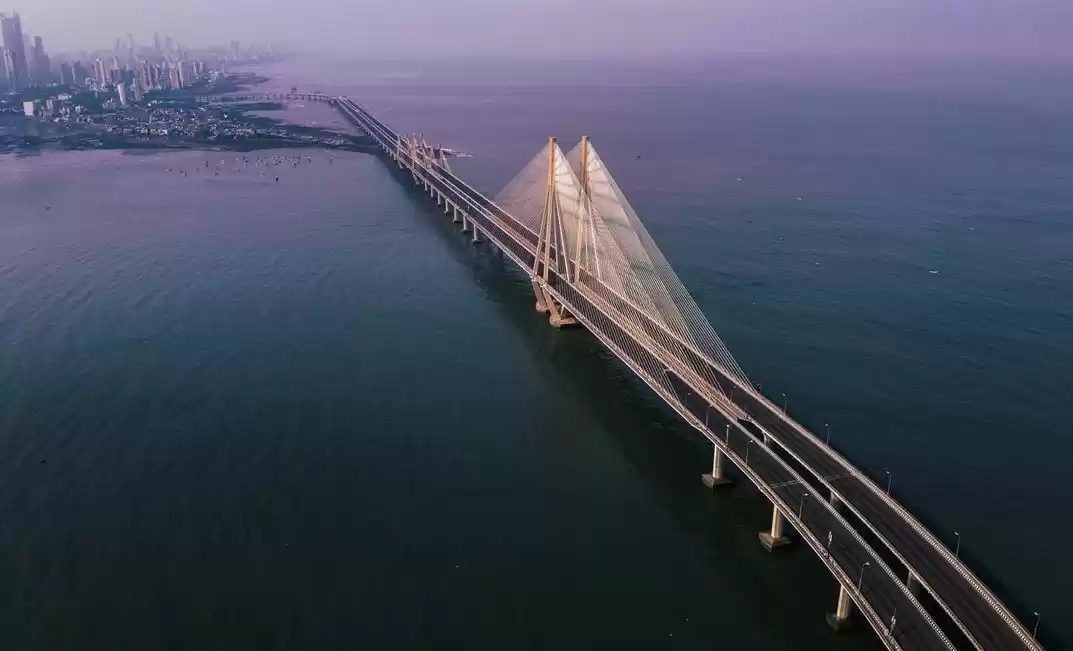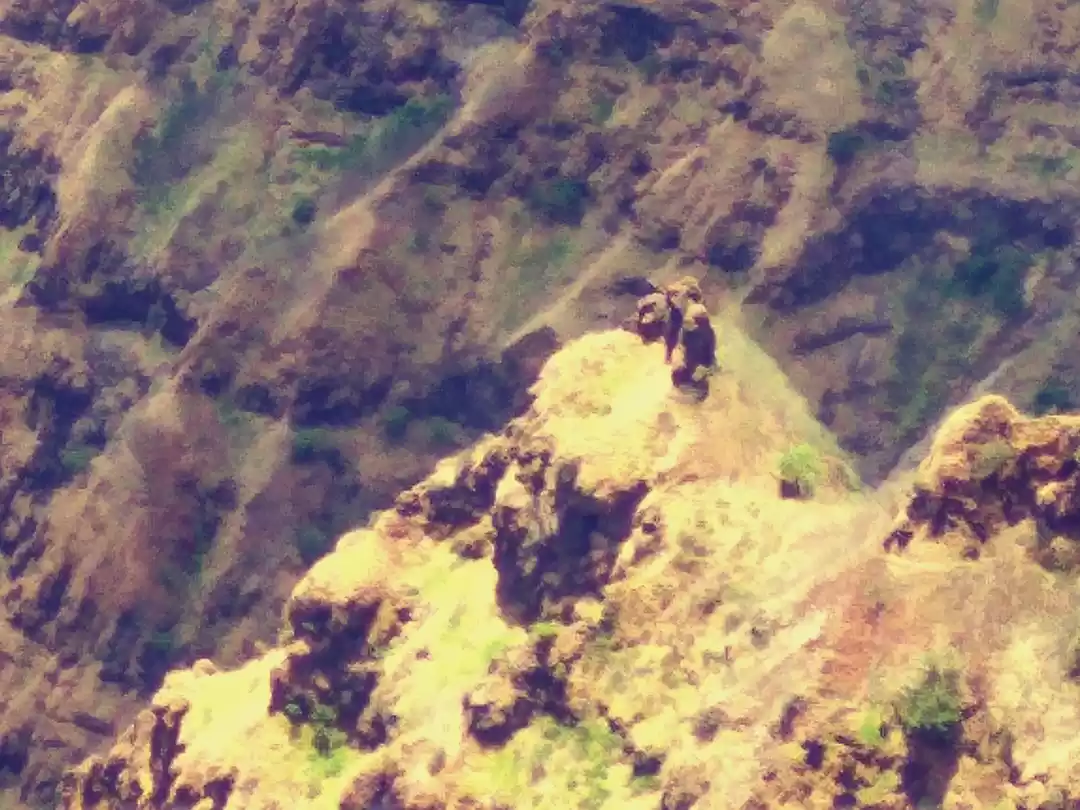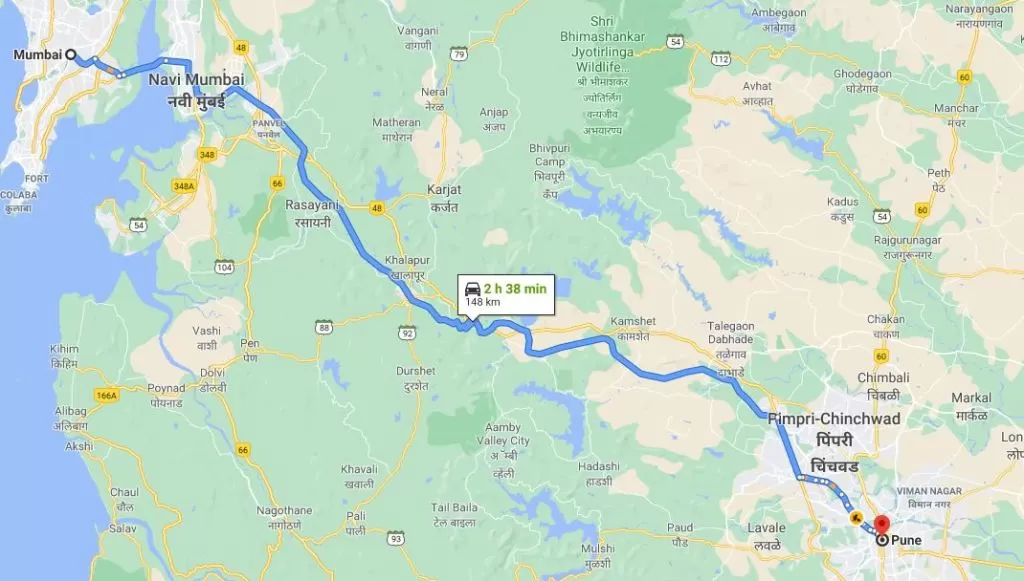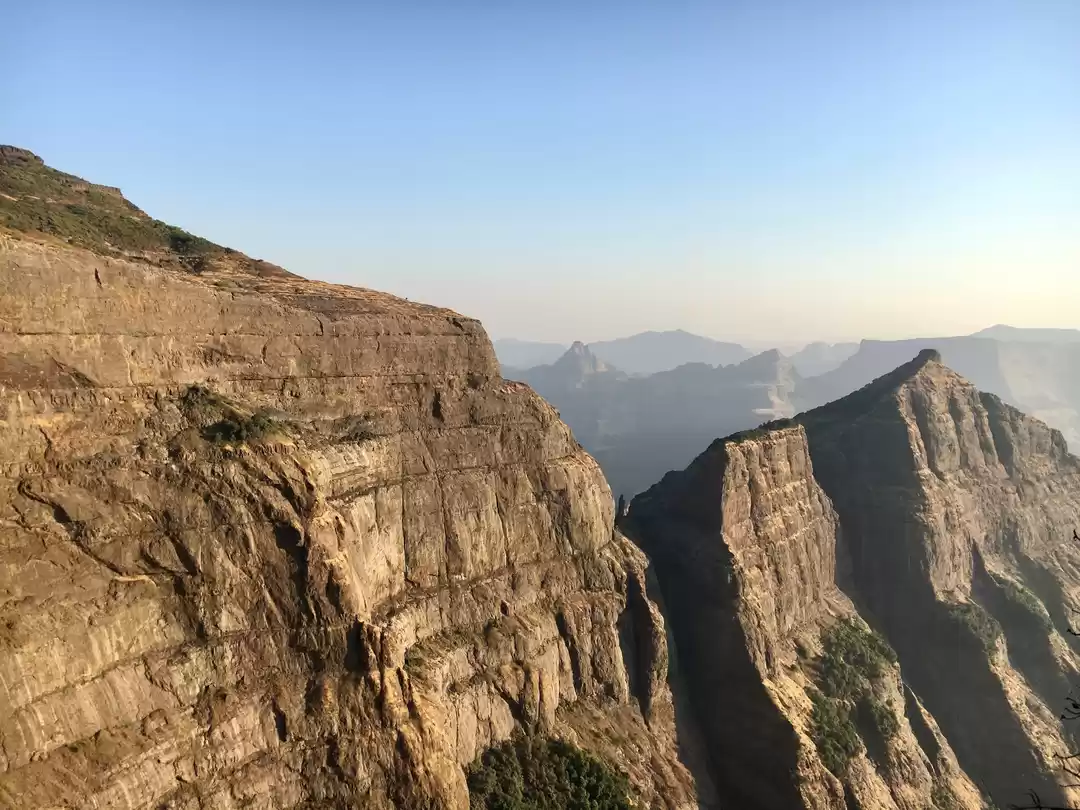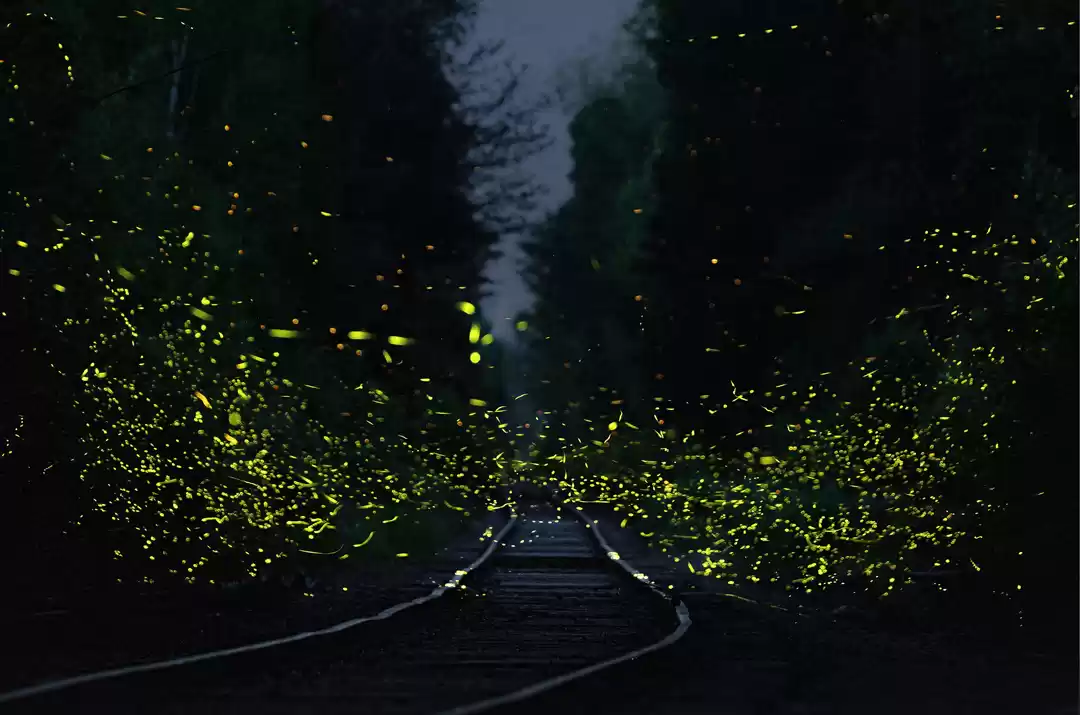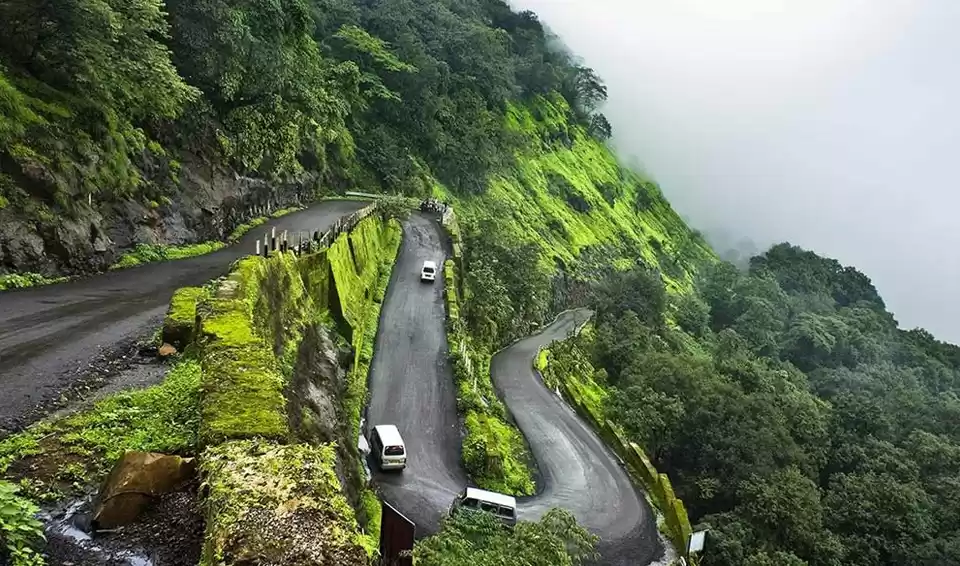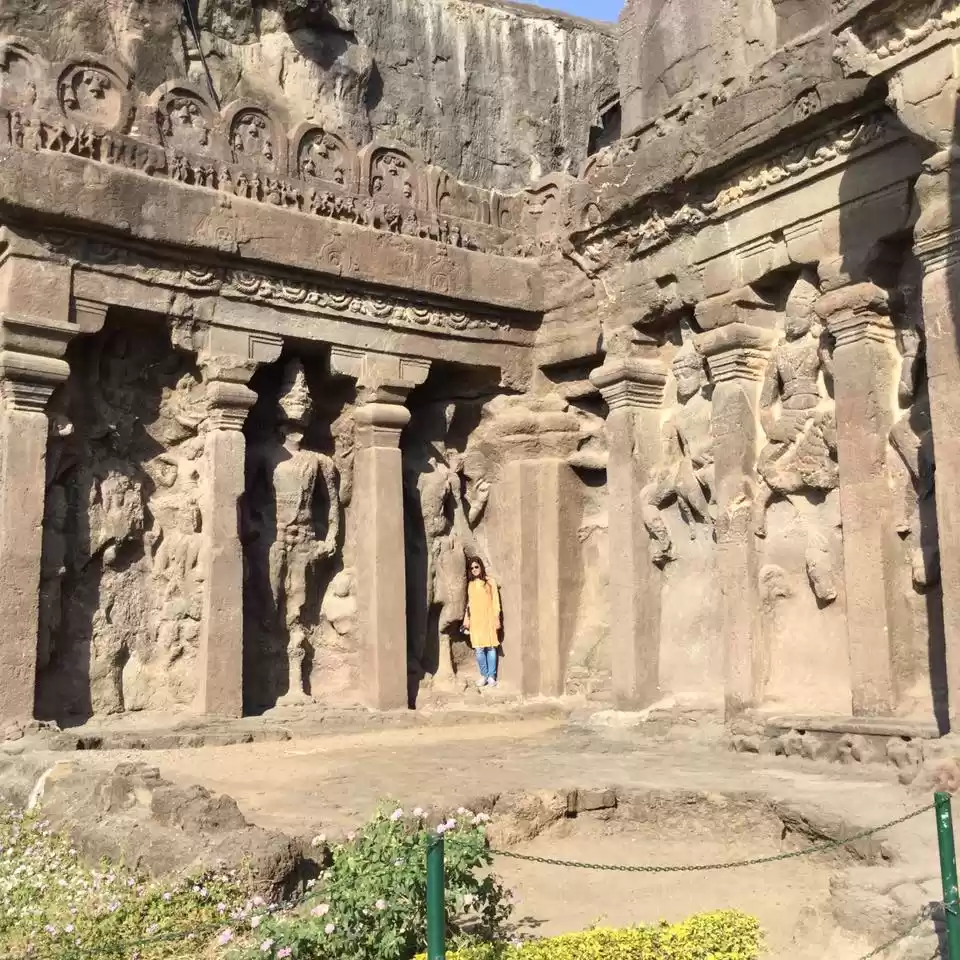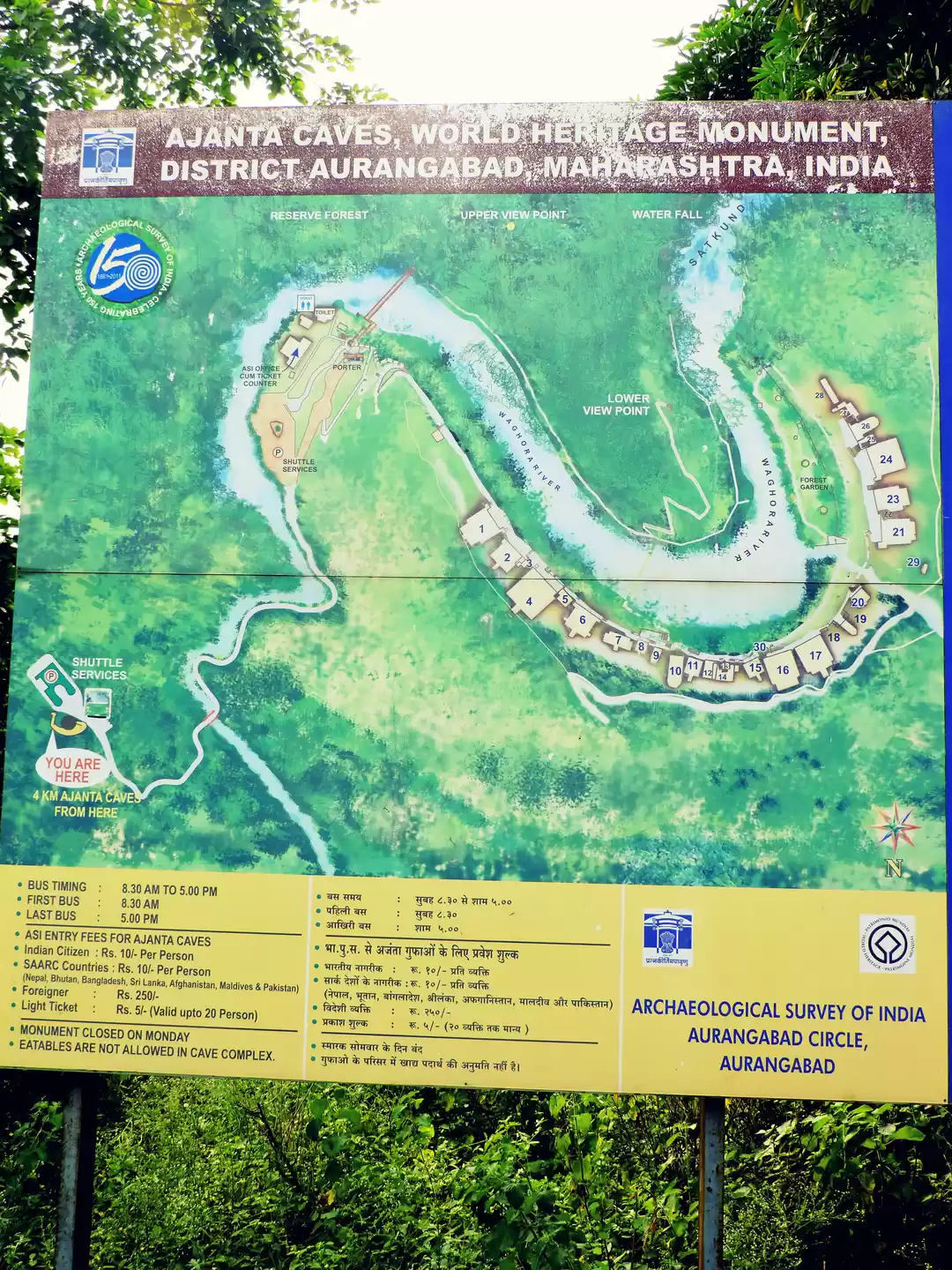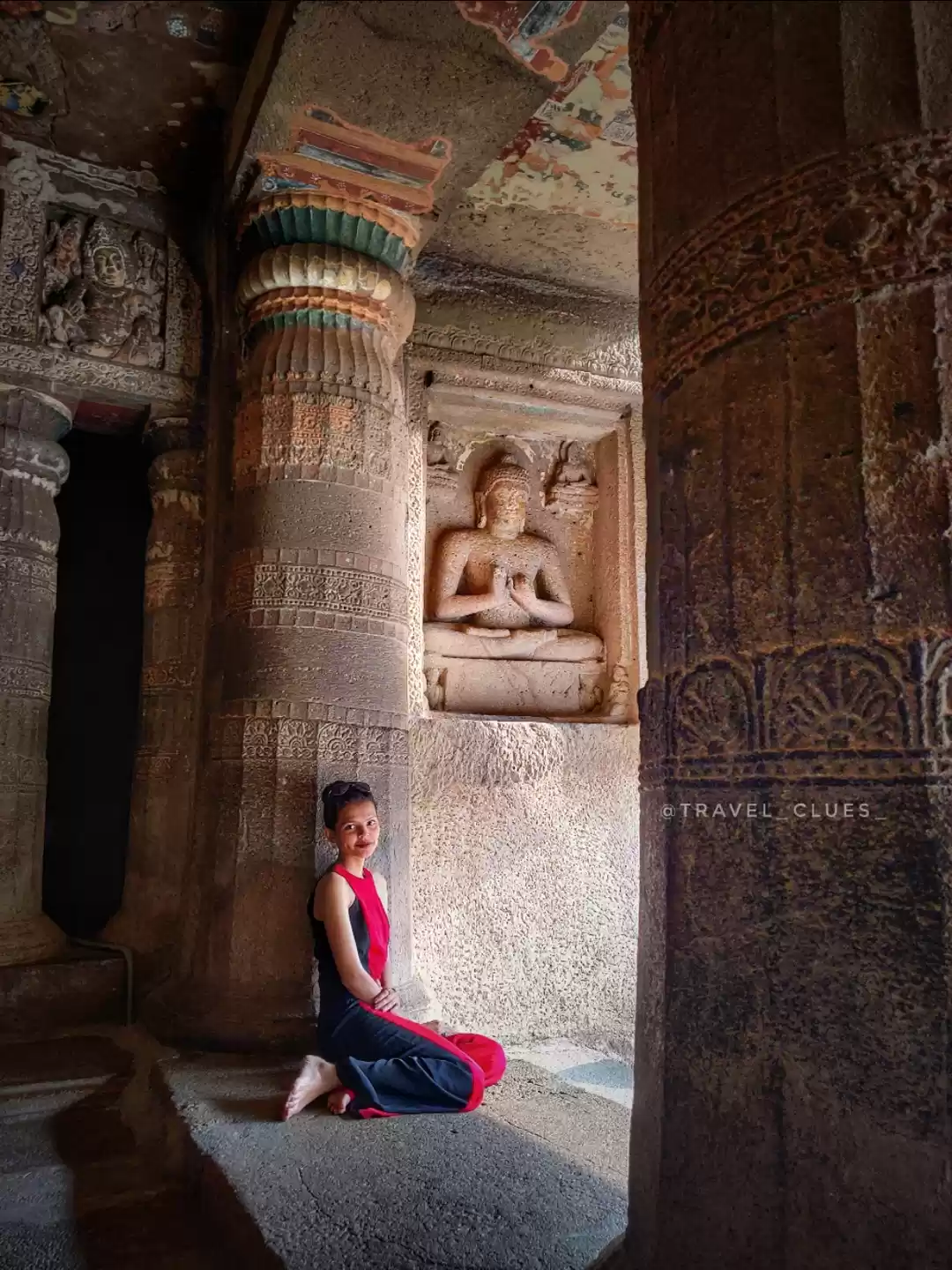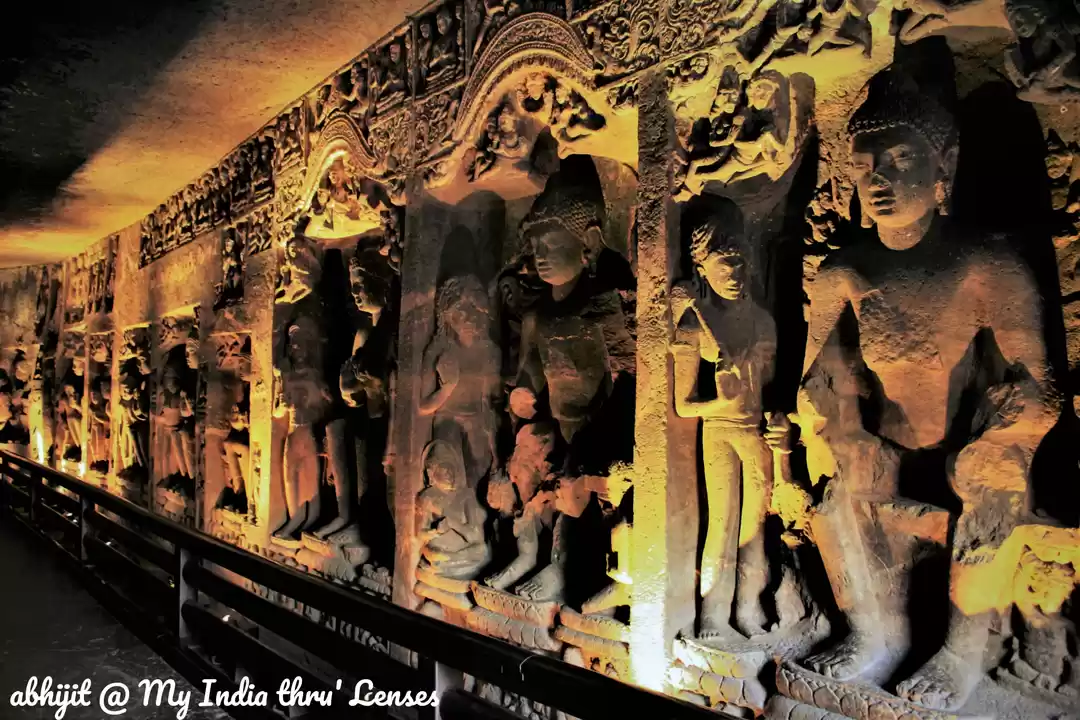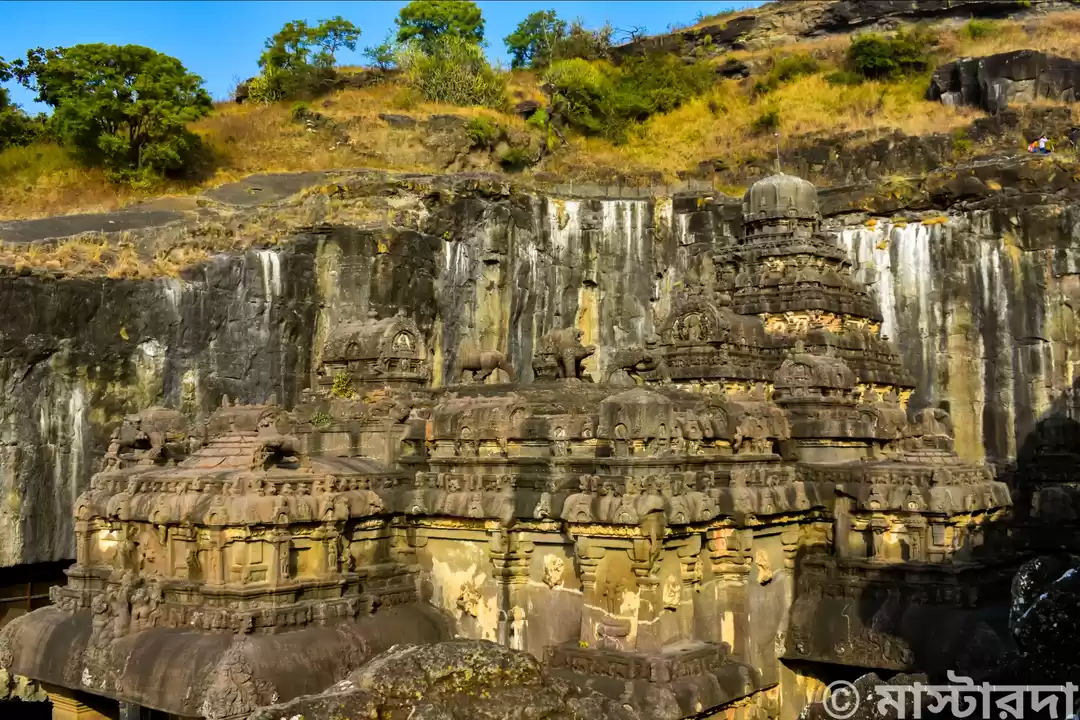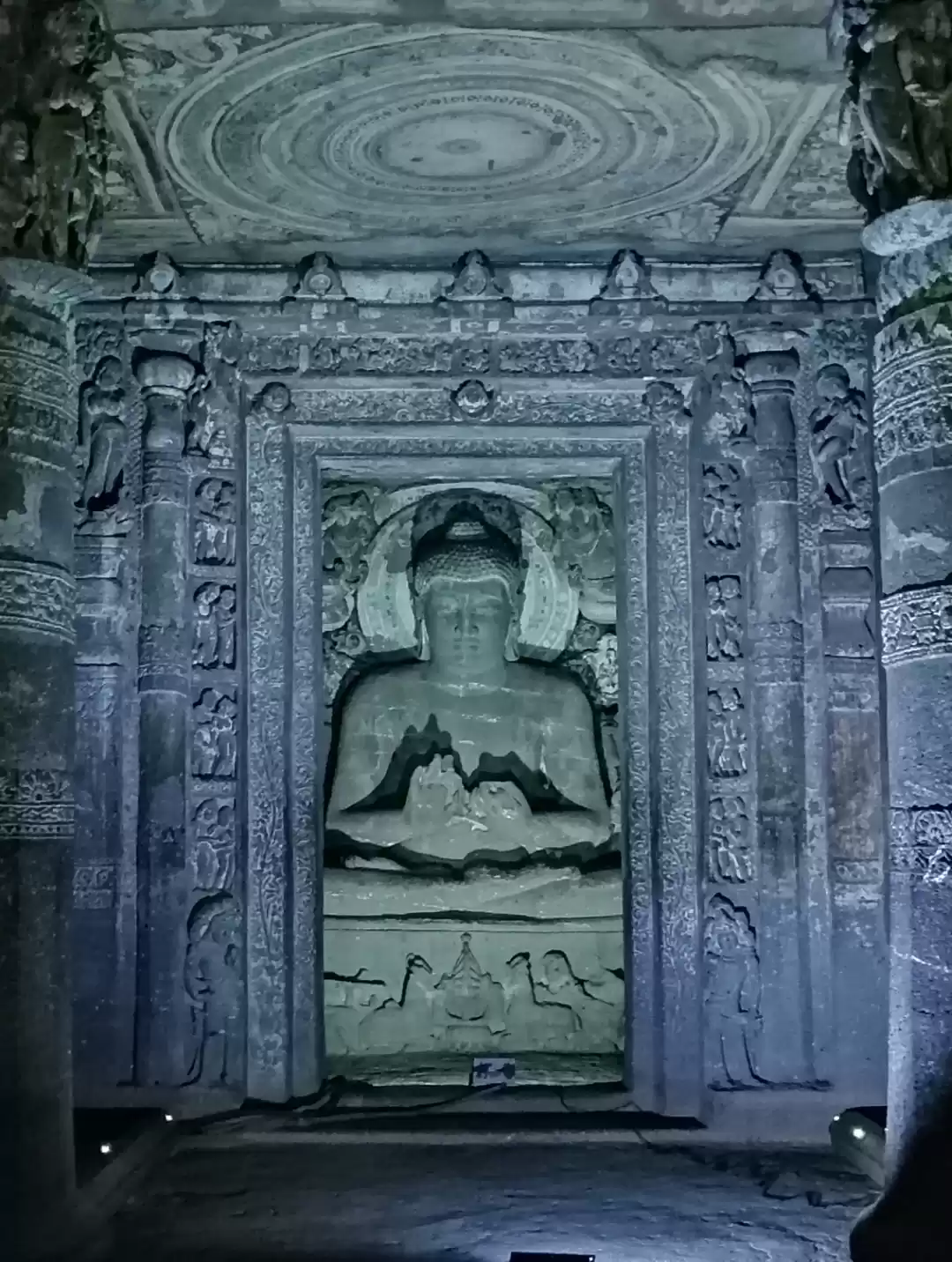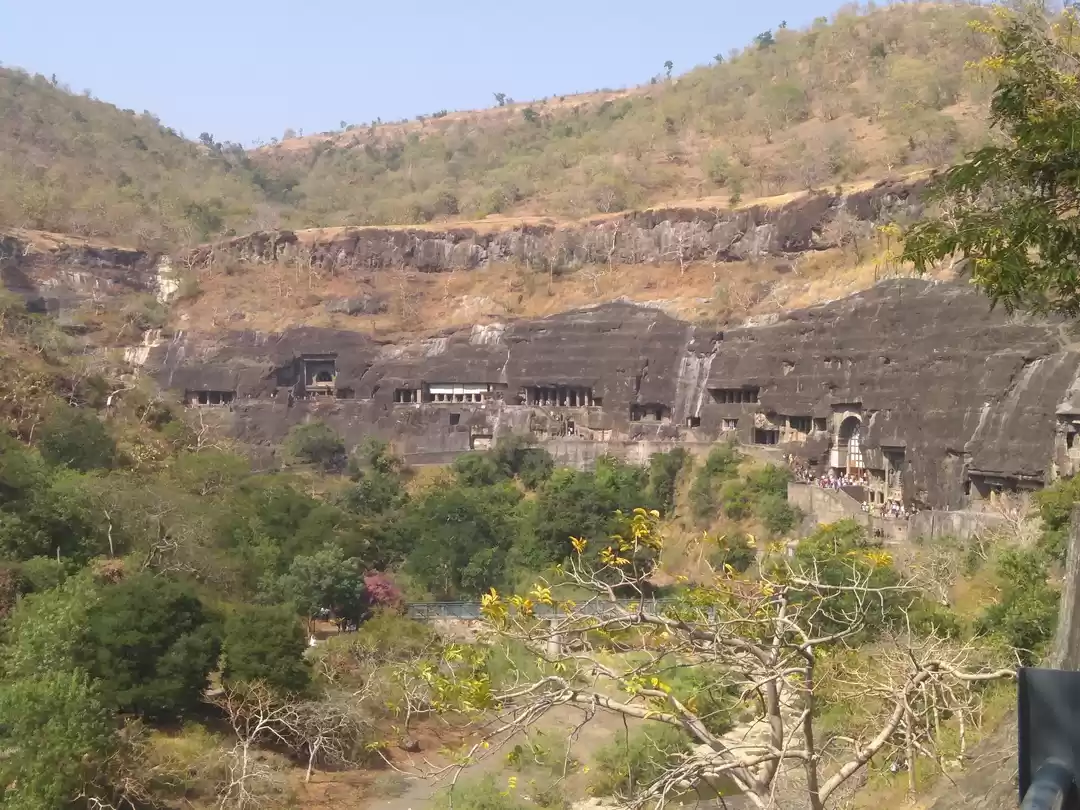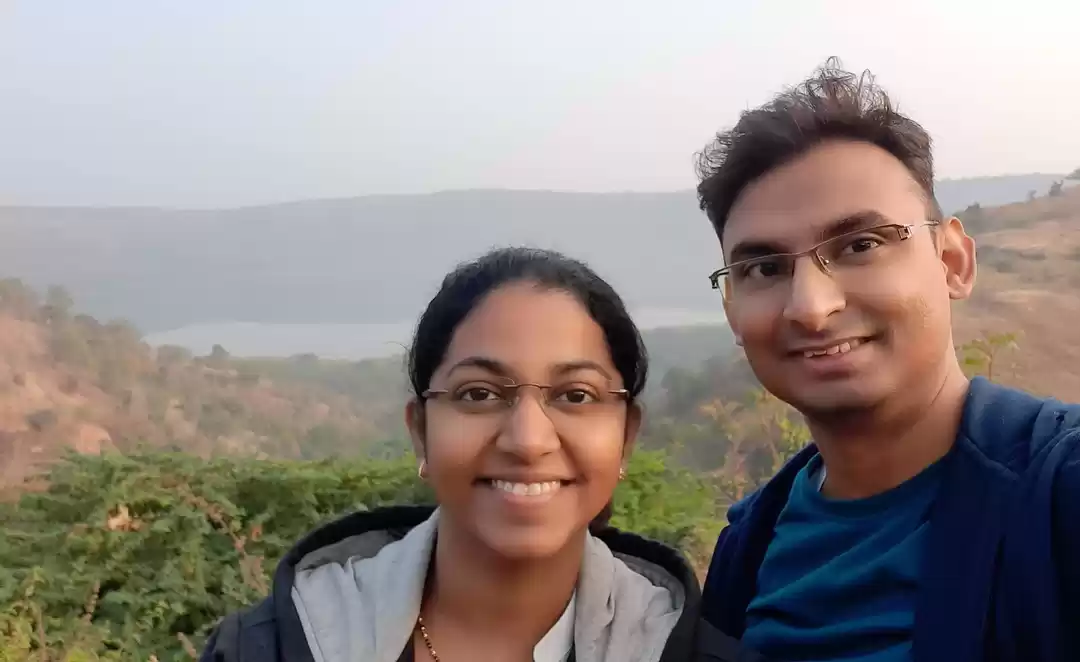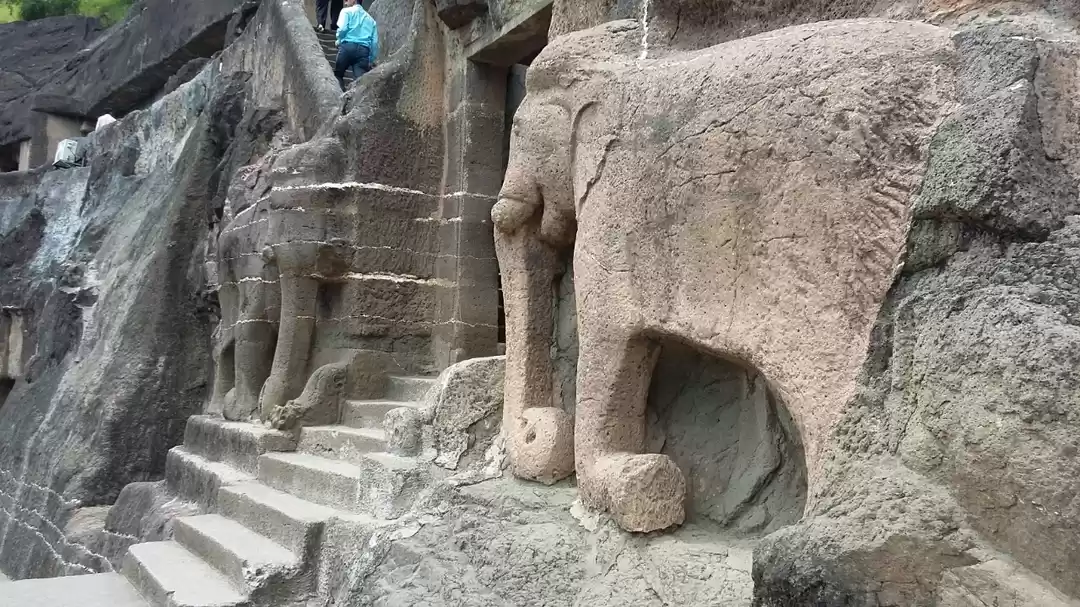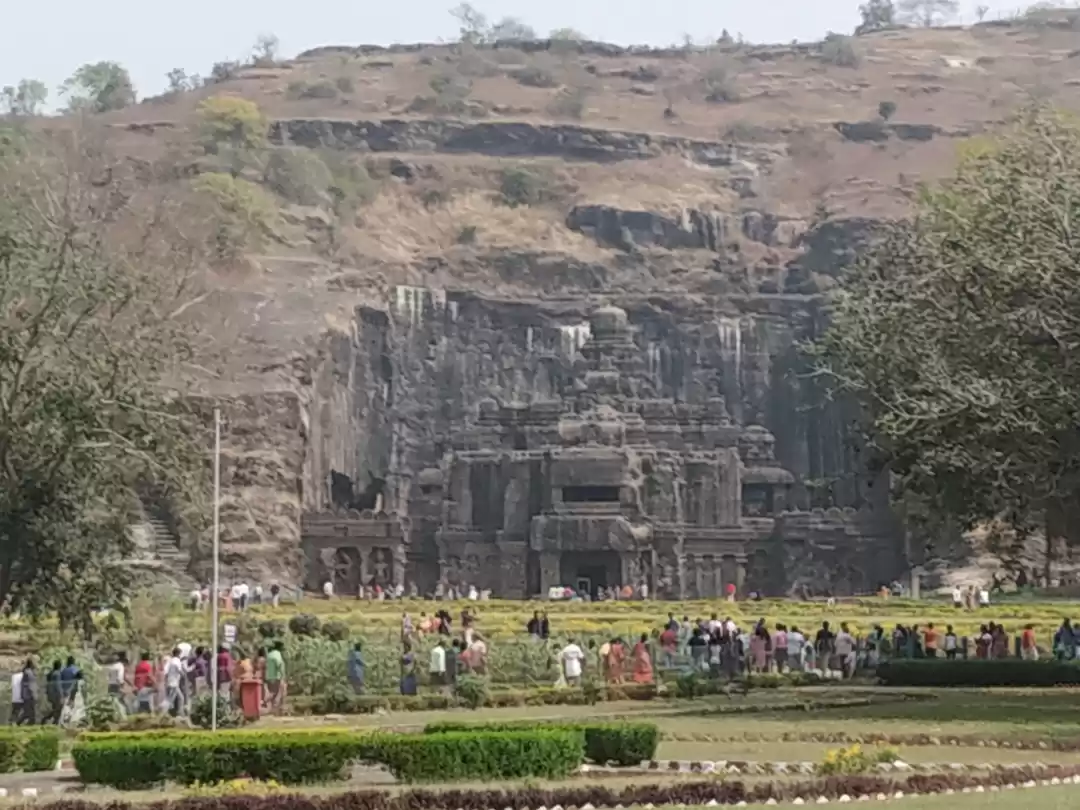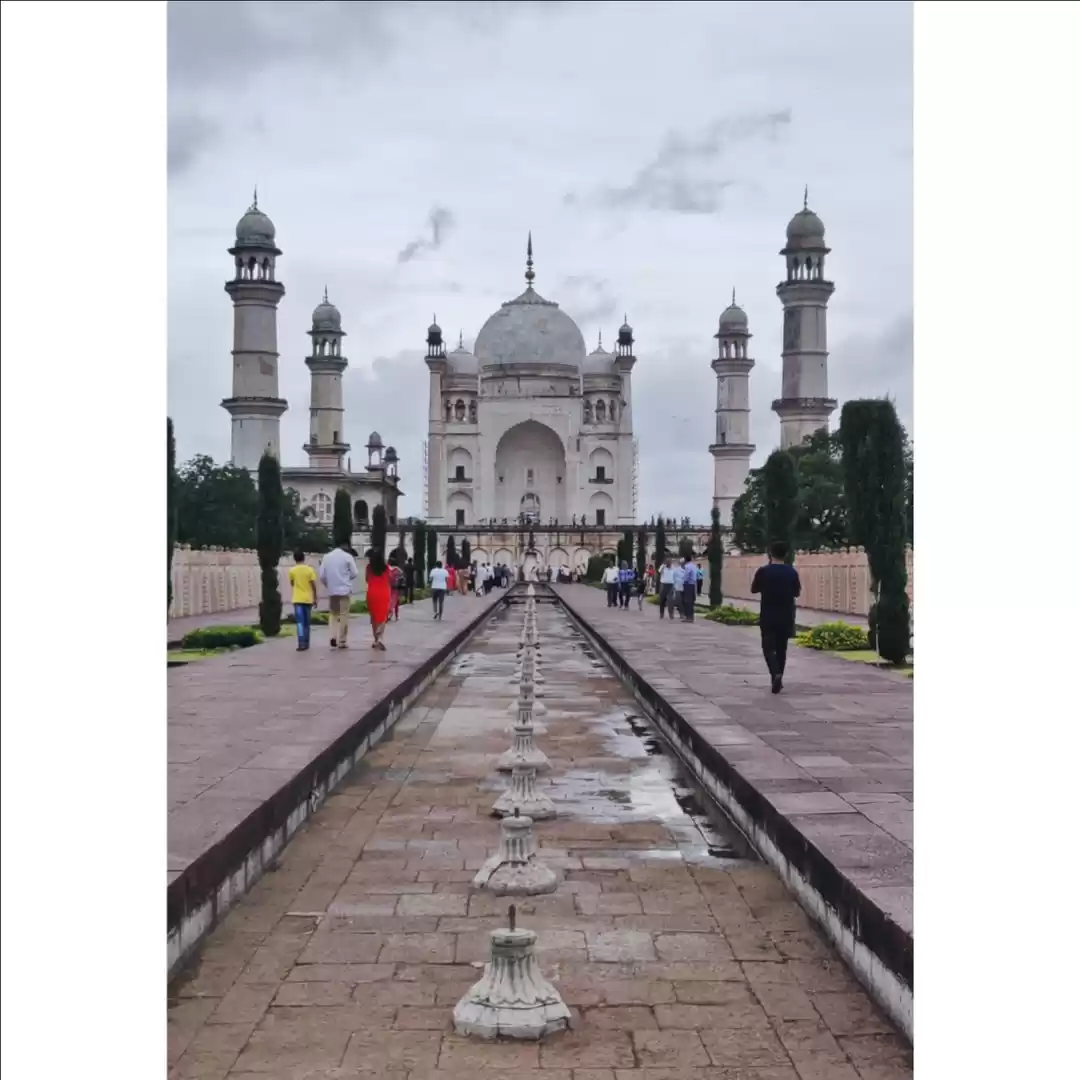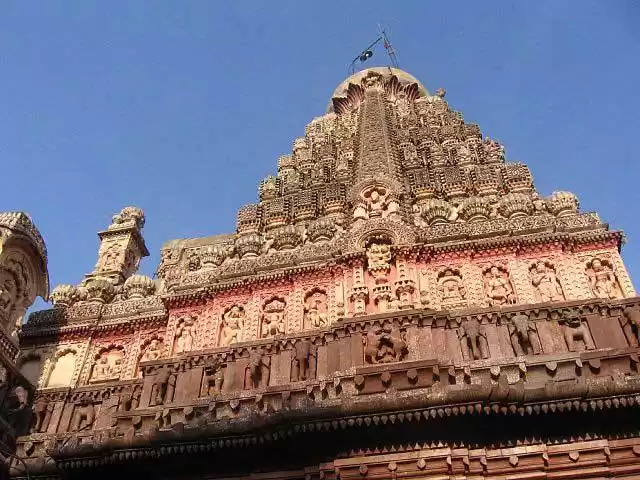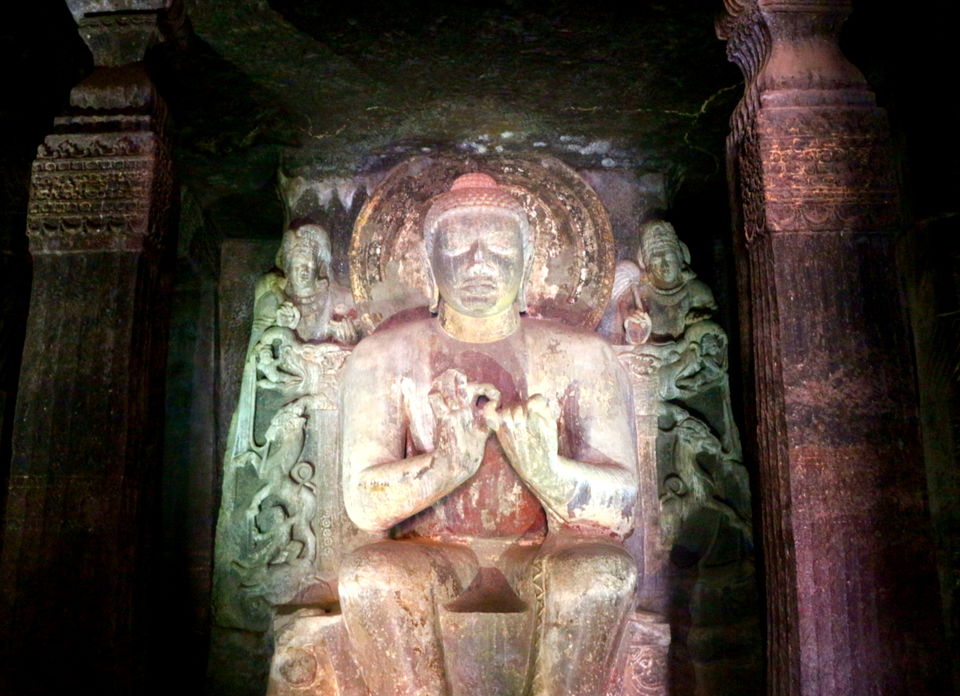
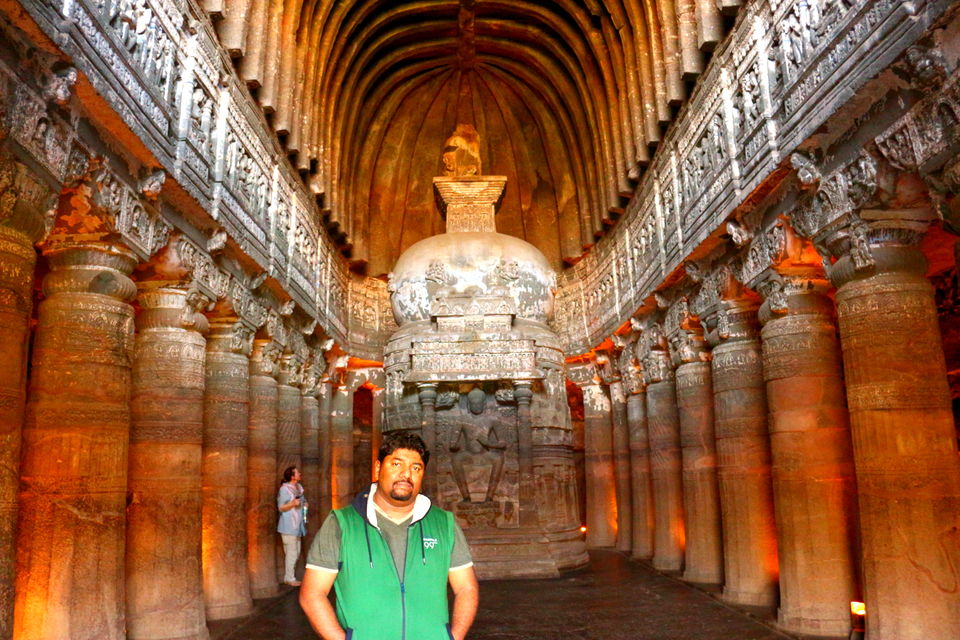
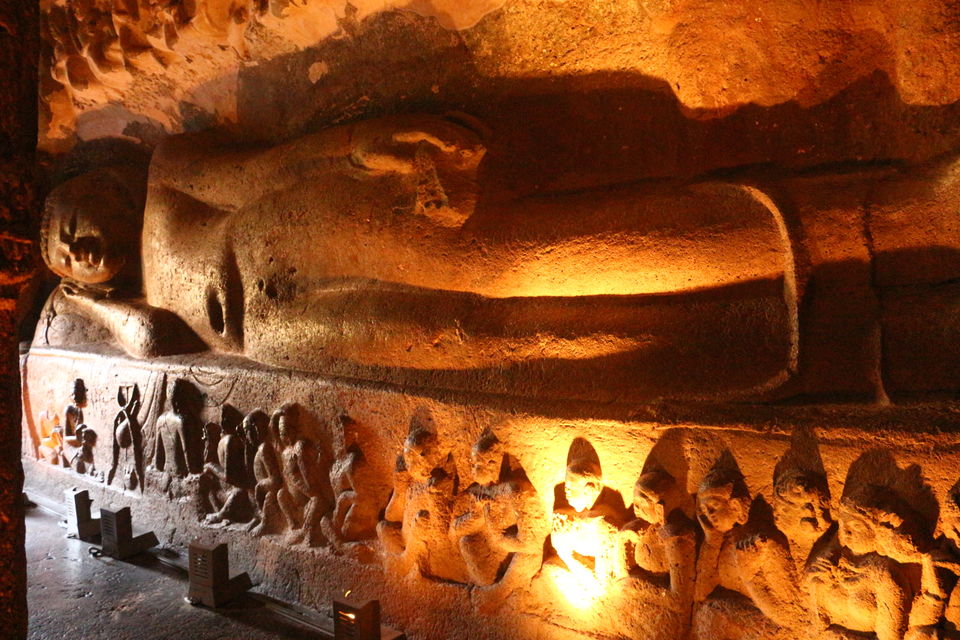
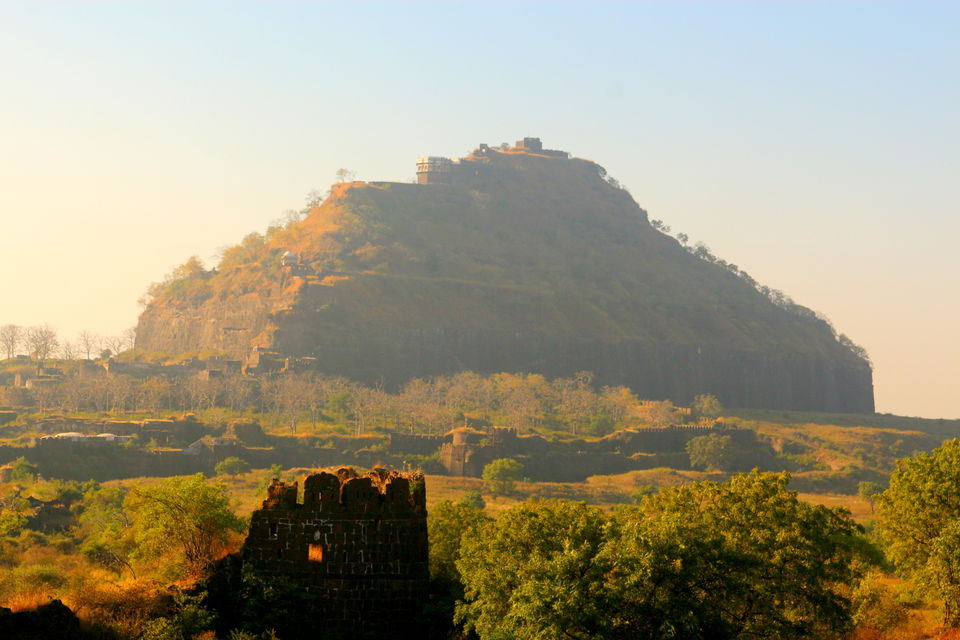
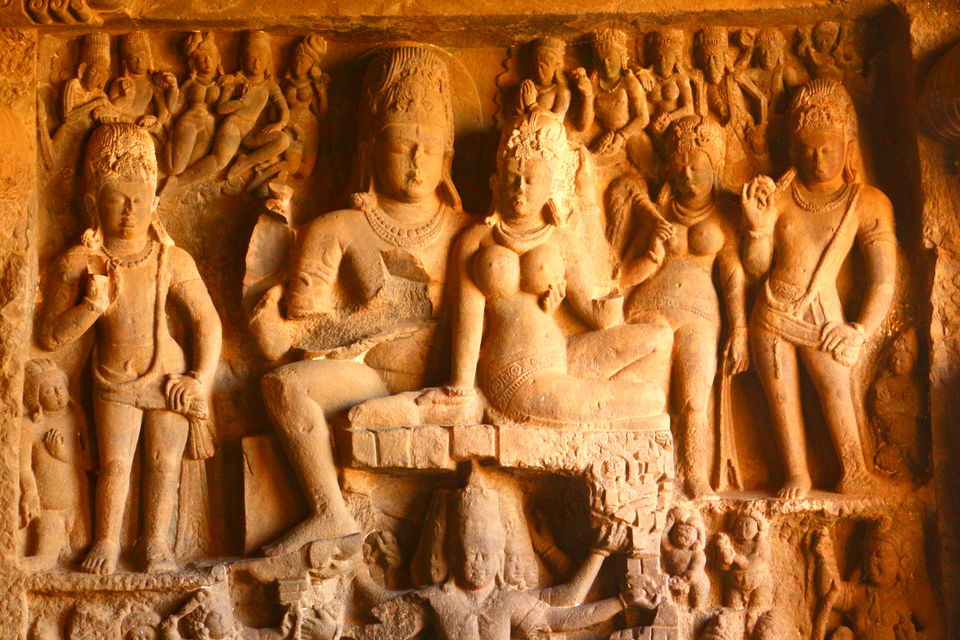
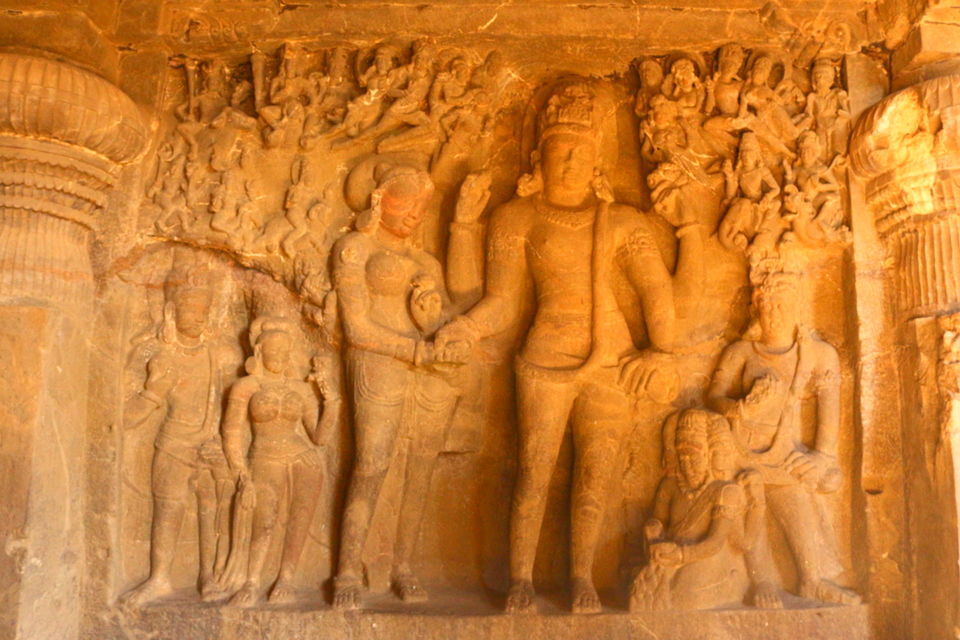
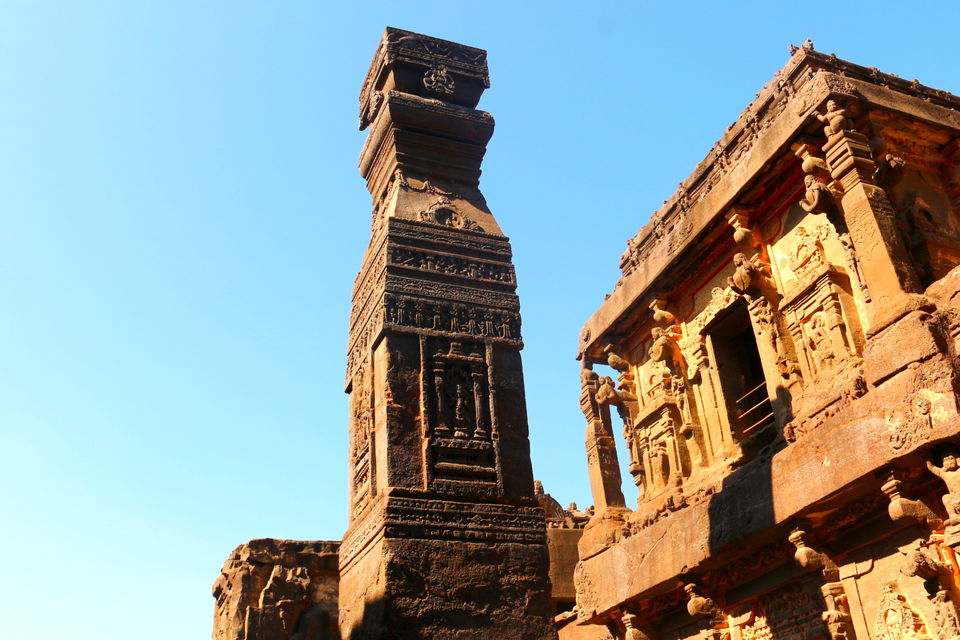
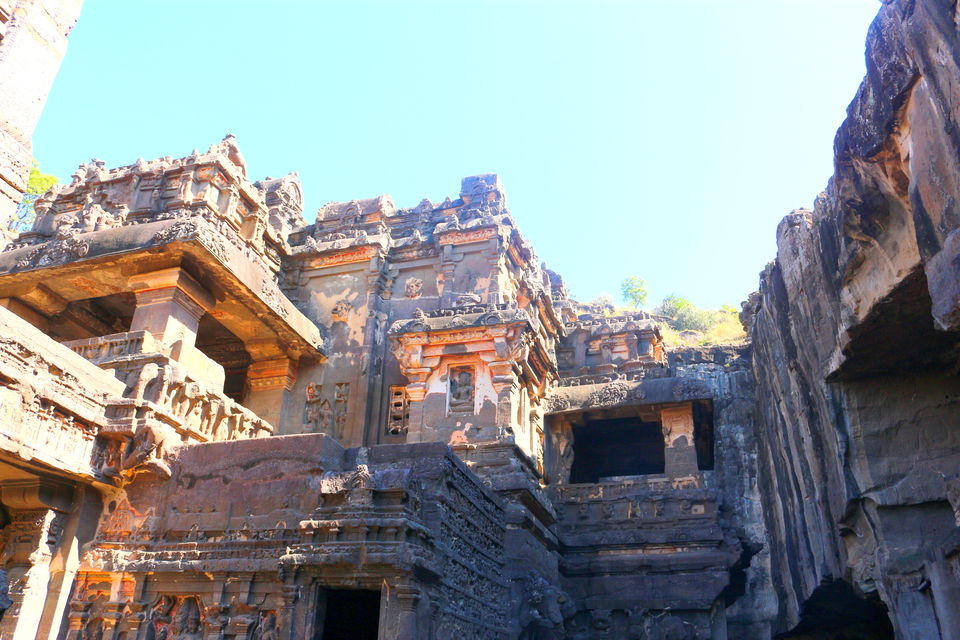
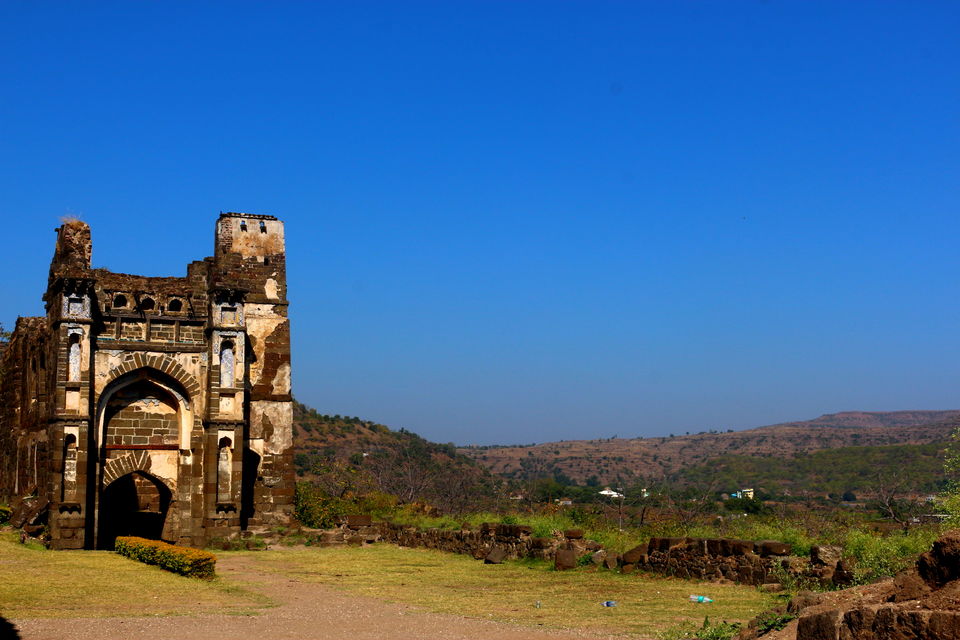
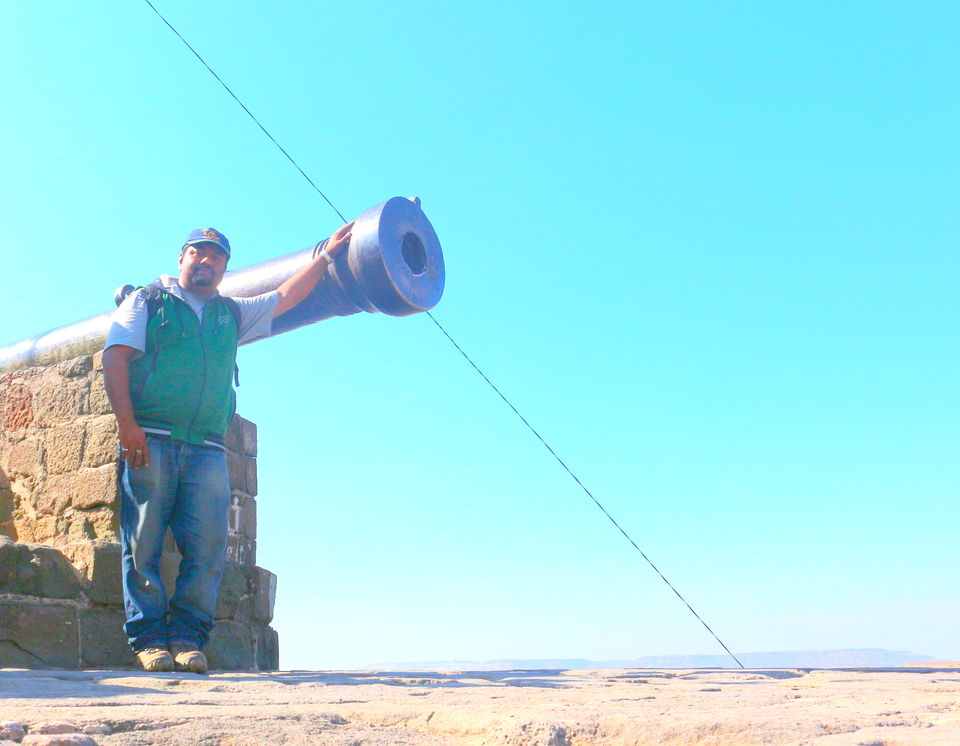
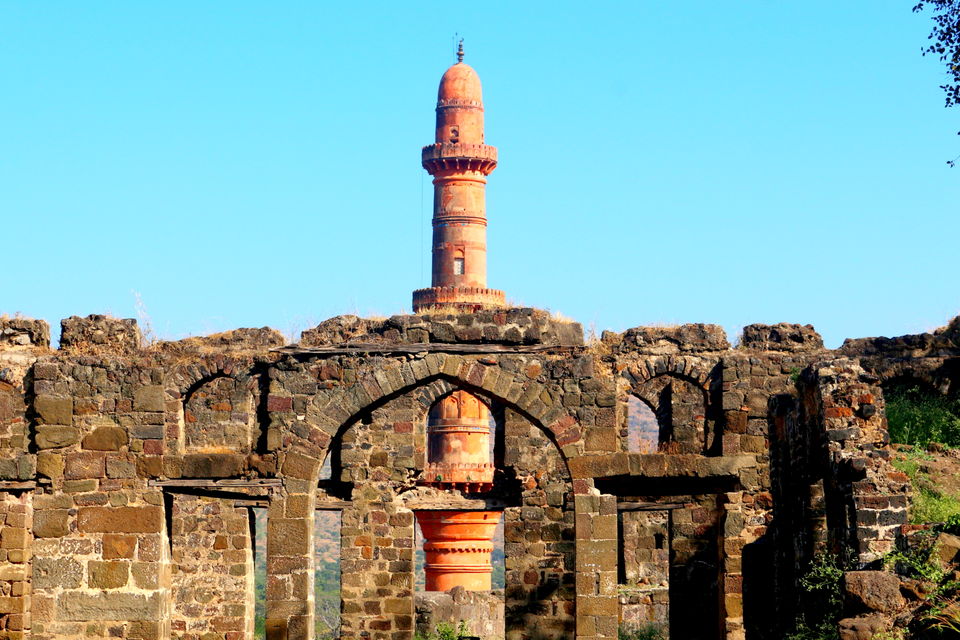
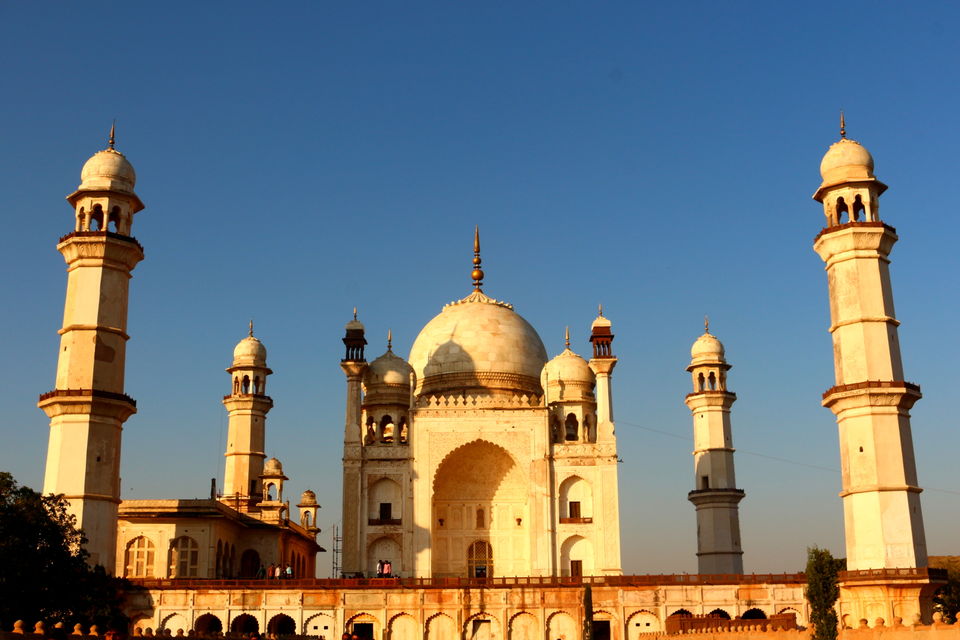
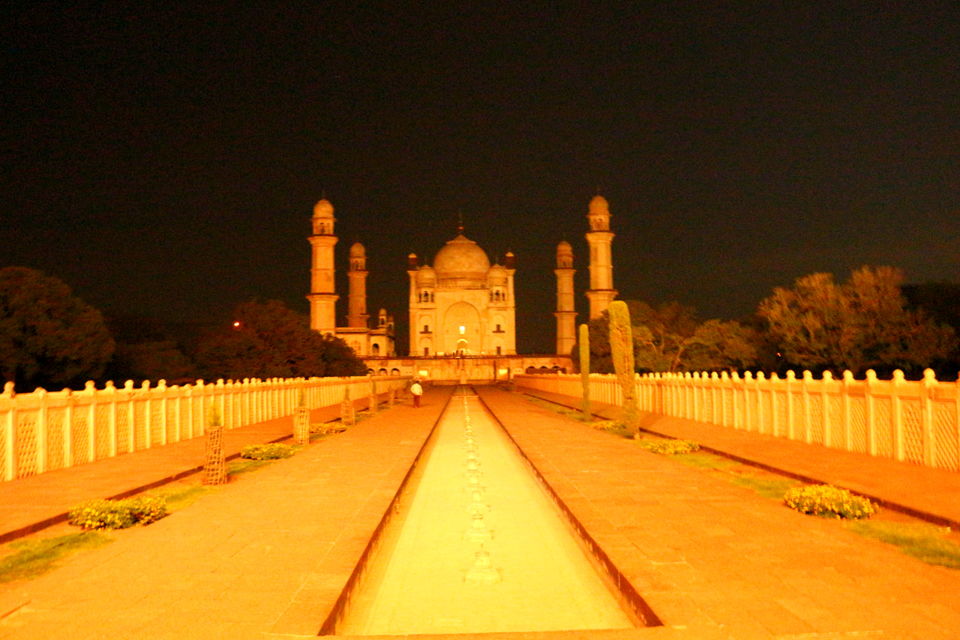
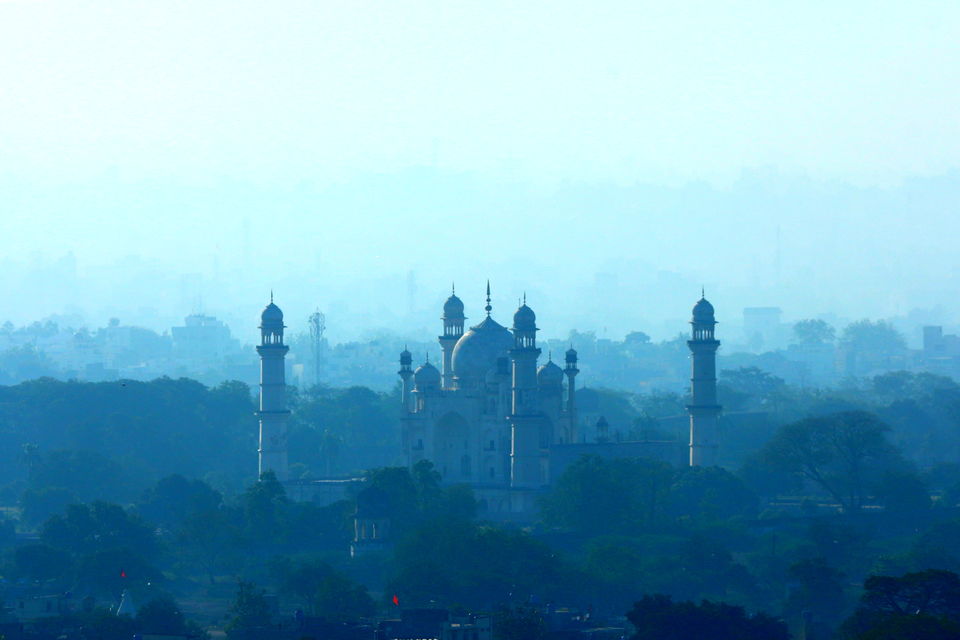
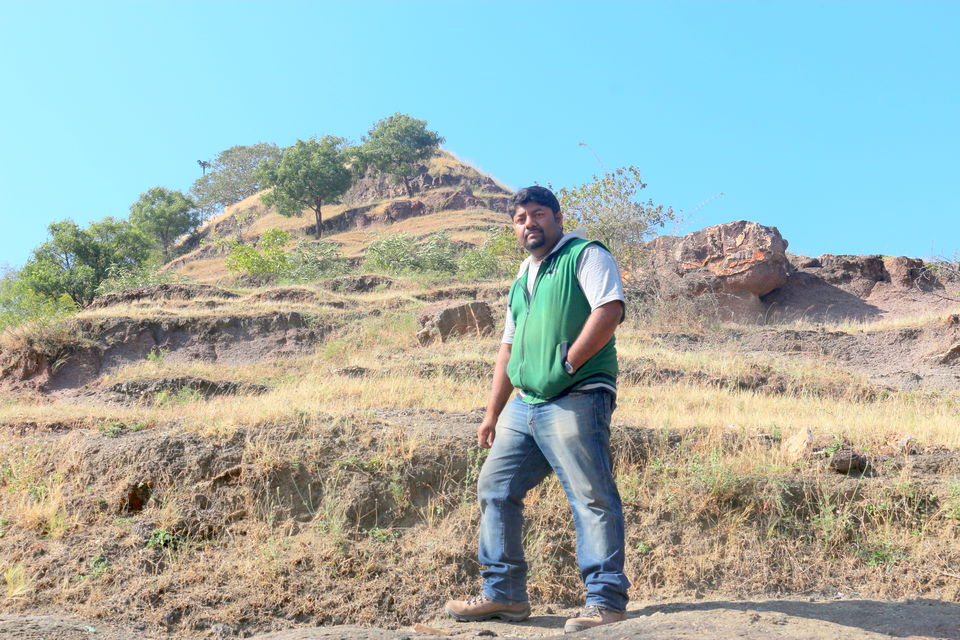
Standing inside the Kailash Cave on 6th Dec 2014, I remembered the words of French novelist Marcel Proust, “The real voyage of discovery consists not in seeking new landscapes, but in having new eyes.” So true are the words. Standing on the largest monolithic structure on Earth was an experience in itself. The carving on the rocks, the architecture, the thought process went behind constructing such a mega structure 1500 yrs ago truly depicts the extraordinary talents in those days and I thanked myself for choosing Aurangabad to spend these three days that came to me as a surprise during our meeting in Mumbai Office.
1st Dec evening I landed in Mumbai for a three day meeting that was ending on 4th and then was another workshop to attend from 8th Dec and I thought of exploring a new place I never been to in these and thus came the thought of Aurangabad.
Aurangabad is named after the Mughal emperor Aurangazeb. The city is a tourism hub, surrounded by many historical monuments, including the Ajanta and Ellora Caves which are UNESCO World Heritage Sites as well as Bibika Makbara, Daulatabad Fort, Panchakki and the lesser known Aurangabad Caves which has been shadowed by the glory and popularity of Ajanta and Ellora. The journey from Ghatkopar Bus stand to Aurangabad took around seven hours and I put my foot on the soil of Aurangabad on 5th Dec early morning and checked in a small hotel “Indraprastha”. I must say, night journey in a sleeper bus was without any trouble. Thanks to the fine roads !
Raees Khan, my guide cum driver arrived at around 9 am and we started our three hour journey to Ajanta Caves. The Ajanta Caves are about 30 rock-cut Buddhist cave monuments which date back to the 2nd century BC. The caves include paintings and sculptures which are masterpieces of Buddhist religious art, with figures of the Buddha and depictions of the Jataka tales. The site is a protected monument in the care of the Archaeological Survey of India and have been a UNESCO World Heritage Site. The caves were accidentally discovered in 1819 by a British officer on a hunting party. They are Buddhist monastic buildings, apparently representing a number of distinct "monasteries" or colleges. The caves are numbered 1 to 28 according to their place along the path, beginning at the entrance.
After almost a three hour journey, we could see the entrance of Ajanta Caves. To avoid decay of the paintings, no outside vehicle is allowed to go near the caves which are around 4 km from the entrance and we had to take the authorized bus service to reach the Caves. The first semicircular sight of Ajanta astonished me. I was wondering thinking about those monks who 2000 yrs ago found such a place to leave behind their legacy and proof of highest quality of art and architecture. I started walking and exploring each cave. Each cave has something new to offer and I was lost in the quest for something more. And that something came as a surprise when one of the Cave caretaker showed me the hillock on the other side of the river. On 28 April 1819, a British officer John Smith, of the 28th Cavalry, while hunting tiger, accidentally discovered the entrance to Cave No. 10 deep within the tangled undergrowth. There were local people already using the caves for prayers with a small fire, when he arrived. Exploring that first cave, long since a home to nothing more than birds and bats and a lair for other larger animals, Captain Smith vandalized the wall by scratching his name and the date, April 1819. The hillock is the place where from he shot the tiger and I decided to go to the top. The well maintained steps took me to the top of the hillock where from the view of Ajanta Caves is simply awesome. You can also see the seven step waterfall on the other side of the hill which during rainy season comes to its full charisma.
I saw my driver waiting outside or may be cursing me for taking almost five hours to enjoy the charm of Ajanta when people generally take two to three hours. The journey back to hotel was a pleasant one with sun disappearing behind the horizon. Aurangabad is also known for Sugar and Cotton industry. While returning, we could see miles of cotton fields and loads of truck carrying Sugarcane to the nearly Sugar Mills.
It is always an experience to enjoy the local food and hence I hired an auto to take me to some local food joint crowded by locals and he took me to one such place. Crowded by at least two hundred people, the place was a great fun to enjoy the local delicacy. I went for a early sleep. Next day will be a hectic one with Ellora Caves, Daulatabad Fort, Panchaki, Bibika Makbara etc on the agenda.
Early morning of 5th Dec we started our journey to Ellora Caves. Ellora is known for Hindu, Buddhist and Jain cave temples built during (6th and 9th centuries) the rule of the Kalachuri, Chalukya and Rashtrakuta dynasties. I first visited the Jagannatha Sabha, a group of five Jain cave temples (No 29 to 34) of 9th century built by Rashtrakutas. They all belong to the Digambara section of Jain religion that reveal specific dimensions of Jain Philosophy and tradition. The most remarkable Jain shrines are the Chhota Kailash (cave 30), the Indra Sabha(cave 32) and the Jagannath Sabha (cave 33). Cave 31 is an unfinished four-pillared hall and a shrine and Cave 34 is a small cave, all these caves are small in comparison to other caves of Ellora and still reflect exceptional art work.
Among all other caves, Kailash temple is the unrivaled centerpiece of Ellora. This is designed to recall Mount Kailash, the abode of Lord Shiva - looks like a freestanding, multi-storeyed temple complex, but was carved out of one single rock. All the carvings are done in more than one level. Within the courtyard are three structures. As is traditional in Shiva temples, the first is a large image of the sacred bull Nandi in front of the central temple. The central temple - Nandi Mantapa or Mandapa - houses the Lingam. The base of the Nandi Mandapa has been carved to suggest that life-sized elephants are holding the structure aloft. The temple is a splendid achievement of Rashtrakuta Karnata architecture. Still with the hangover of Ellora and Kailash temple, we started our journey to Daulatabad fort. On the way we visited the Dargah Hazrat Khwaja where the tomb of Mughal Emperor Aurangazeb lies. I have visited many Dargah, however the calmness of this Dargah amazed me.
Devagiri, later known as Daultabad, situated 11 kms north-west of Aurangabad, is famous for its formidable hill fort. The fort is situated on an isolated cone-shaped hill from the plain to the height of about 190 metres. The Chand Minar, the Chini Mahal and the Baradari are the important structures within the fort. The Chand Minar, about 63 metres in height, was erected by Alauddin Bahman Shah in 1435 AD to conquest of Daulatabad. The uphill journey was a bit tiresome considering the heat during day time. On the way, I found many people sitting on the steps and trying to catch their breath. Any uphill journey initially may look easy and mistakenly many people try to conquer fast and soon fall prey to lost breath. It is always better to follow the old saying “slow but steady wins the race”. Within forty minutes I reached the top and was amazed with the 360 degree panoramic view around the fort. Had I had the opportunity, I would have preferred to stay till late night to enjoy the full moon night view from the top of Daulatabad. However since there is no such chance, accepting the hard truth, I came down and had lunch with Raees Khan, my guide cum driver. Our next destination is Panchaki.
Panchakki is a small place with nothing much to offer. Panchakki, also known as the Water Mill, takes its name from the mill which used to grind grain for the pilgrims. This monument displays the scientific thought process put in medieval Indian architecture. It was designed to generate energy via water brought down from a spring on a mountain.
After Panchakki, we headed to the much awaited Bibika Makbara – the Taj of Deccan. I remember seeing a photograph of Bibika Makbara since my childhood when my father visited this place in 70s during one of his NCC trips to Pune. He described this as one of the finest monument of South India. When I planned for this trip, my father was telling the beauty of Bibika Makbara in full moon night and fortunately today (6th Dec 2014) is also a full moon night and I decided to come back again when darkness falls.
Bibi Ka Maqbara is situated about 5 kms from the Aurangabad city, the burial place of Aurangzeb wife, Rabia-Durrani. The tomb dates from 1678 and was erected by Prince Azam Shah, one of Aurangzeb's sons, in memory of Begum Rabia Durani, his mother. It stands in the middle of a spacious and formally planned garden, some 457 by 274 meters, with axial ponds, fountains, and water channels, many defined by stone screens and lined with broad pathways. The garden is enclosed by walls with fortress set at intervals, and open pavilions on three sides. After enjoying the “Mini Taj”, I went back to hotel and headed for famous Himroo Factory. I could see the moon glittering with all its glory and decided to reach Bibika Makbara once again and called the auto.
Bibika Makbara at around 7 pm was almost a deserted place with few people trying to capture its beauty in mobile which was almost an impossible task. Dark background, White marble structure, full moon in the sky, tall minaret translated this place to an experience which someone has to try hard to forget.
I got up early since its going to be a long day considering half day sightseeing followed by local train journey back to Mumbai. Early morning we arrived at Aurangabad Caves. The cave temples of Aurangabad cut between the 6th and the 8th century are nine kilometers from Aurangabad, near Bibi-ka-Maqbara. Carved in the Sihaychal ranges, the Aurangabd caves somewhat have been overshadowed by the UNESCO World Heritage monuments of Ellora and Ajanta cave temples. After lot of studies and deliberations, it has been declared as a protected monument under the Archaeological Survey of India. The view of Aurangabad from these caves is amazing. Bibika Makbara looks like floating on the fog and dust of the city when seen from here. I visited the Shivaji Museum and then headed for Railway station to catch the train to Mumbai.
This trip was first published on http://anirban2014.weebly.com/.


